5. The Usual Suspects (1995)
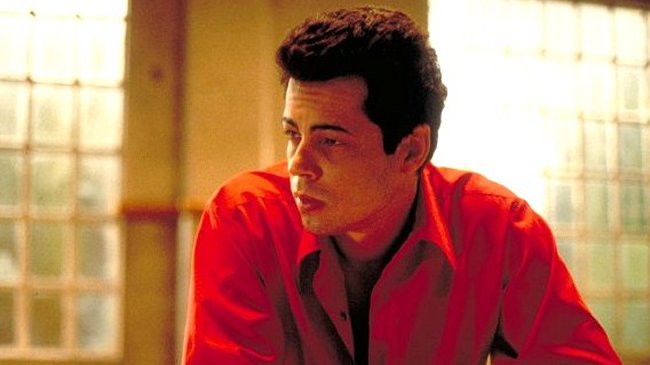
Bryan Singer’s ground breaking crime thriller is a seminal masterpiece, flawlessly shot, with a highly gripping, smart script written by Christopher McQuarrie. Featuring one of the finest plot twists of all time, the film is packed full of great performances from an amazing cast: Oscar-winner Kevin Spacey is the survivor and narrator Verbal, along with Gabriel Byrne, Chazz Palminteri, Stephen Baldwin, the late Pete Postlethwaite and of course Del Toro in one of his earliest noteworthy roles.
Picking up the Academy Award for Best Original Screenplay, “The Usual Suspects” is outstanding from start to finish. Arguably Bryan Singer’s most accomplished work, it heightened the careers of every actor involved. The piece gave Del Toro his first break, providing a platform to show the world his unique and remarkable skills.
Although he originally auditioned for the role of McManus, he later requested to audition as the almost inaudible gangster, Fenster, deliberately making his dialogue bizarrely difficult to understand. “The Usual Suspects” opened a number of doors for Del Toro, leading to further roles in the 90s in “Fear and Loathing in Las Vegas,” “Basquiat,” and “The Funeral” prior to a staggering increase in successful roles from 2000 onwards.
4. 21 Grams (2003)
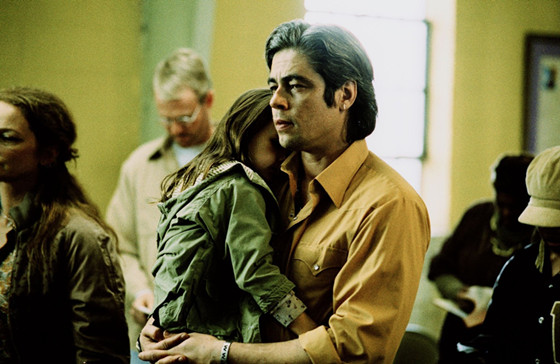
“21 Grams” is the central entry in Mexican director Alejandro Gonzalez Inarritu and screenwriter Guillermo Arriga’s self-proclaimed ‘Trilogy of Death,’ following 2000’s equally impressive “Amores Perros” and eventually leading to 2006’s heart breaking drama “Babel.” The trilogy serves as a brutally honest anthology depicting the nature of human cruelty.
Each entry in the trilogy is as equally strong and effective as the last. “21 Grams” focuses on the horrific aftermath of a road traffic collision. Presented in a fragmented, nonlinear narrative, it features three main characters, Sean Penn’s fatally ill mathematician, Naomi Watts as a grieving mother, and Del Toro as a born-again Christian following his incarceration. Presenting each of the three character’s past, present, and future as a disjointed story, the film follows them and how they tackle their repercussions following the tragic incident.
Del Toro’s ex-convict and drug addict-turned faithful Christian, Jack Jordan, is a man on the road to redemption, yet harbouring a burden of guilt, attempting to teach his wife and child the codes and ethics of the Bible, despite their lack of enthusiasm.
Providing an entrancing performance, Del Toro never fails to be convincing as the reformed man of faith, filling the role with intricate complexity. His attempt to retain control of his life keeps the audience invested up until the character’s arc is complete, a significant character in the career of Del Toro.
3. Sicario (2015)
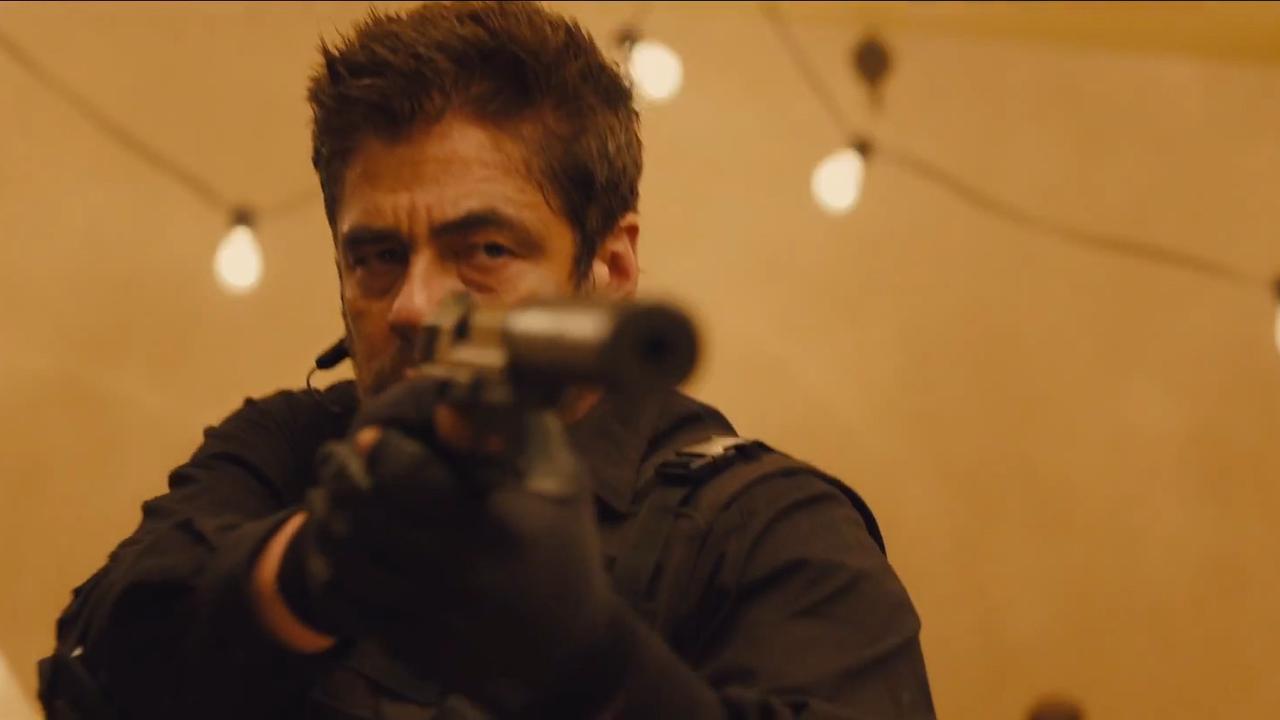
Denis Villeneuve is one of many ambitious and promising directors to emerge over the past few years, a master of building suspense, skilfully executing gripping scenes with a combination of ominous tones, dark entrancing camera work, and smart editing. Over the past few years, the Canadian director has provided audiences with “Prisoners,” “Enemy,” and arguably his finest work to date, “Sicario.”
As well as his enthralling filming style, he makes great use of the high calibre of actors in his intense pieces, providing superb roles for Paul Dano and Hugh Jackman, as well as Jake Gyllenhaal in both “Enemy” and “Prisoners,” and possibly the most noteworthy, the combination of Emily Blunt, Josh Brolin, and Benicio Del Toro in “Sicario.”
“Sicario,” which translates to hitman in Spanish, tracks Emily Blunt’s character Kate Macer, as she enters the war on drugs. Corruption and organised crime runs rampant on the borders of Mexico. Following a harrowing discovery made by her SWAT team in the beautifully shot, yet brutal opening scene, she cautiously joins forces with the suspicious and concealed Matt Graver, played by Josh Brolin, and the even more dubious and supressed Alejandro, portrayed by Del Toro.
As a man with questionable motives, Alejandro is indecipherable, with a chequered past that he keeps to himself, making it impossible for Kate as she tries to understand his involvement in the whole ordeal. Superbly accomplished by Del Toro, the role of Alejandro is one he has spent his entire career expertly crafting.
As his involvement remains a mystery up until the final act, it quickly becomes clear that this has been Del Toro’s film throughout. In a thriller full of ground breaking and powerful segments, none come close to the controversial final scene, outstandingly controlled by Del Toro.
2. Traffic (2000)
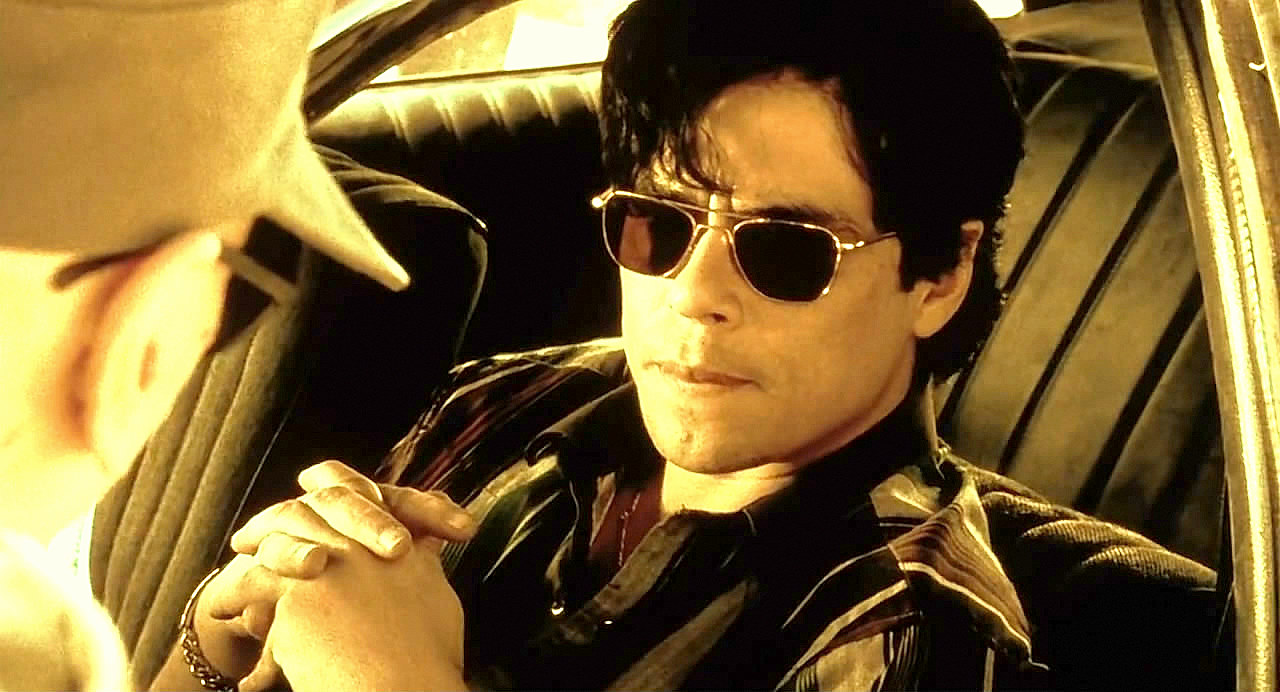
Steven Soderbergh’s drug-focused crime thriller “Traffic” was debatably Del Toro’s first acting role to attain substantial critical acclaim, winning him an Academy Award in the Best Supporting Actor category for his performance as a conflicted officer of the law, Javier Rodriguez. The film is full of several great performances, from Michael Douglas, Don Cheadle, and Catherine Zeta-Jones, and yet Del Toro is the actor that stands out amongst the rest, remaining unforgettably brilliant throughout the picture.
An inspiring and ambitious piece of cinema, flawlessly helmed by Steven Soderbergh following his remarkable triumph on his previous award winning feature “Erin Brockovich,” this film sees three drug-related crime stories from varying perspectives, all tied together with one underlying message that there is no clear cut black and white involvement in the world of crime, no direct heroes or villains.
At the films core is Del Toro’s disputed anti-hero Javier Rodriquez, a man of authority, power, and criminal involvement, yet, who deep down, is an honest and sympathetic character. He is not afraid to make impartial and at times morally wrong decisions to accomplish his aims. Skilfully portrayed by Del Toro, he confidentially fills the role of the torn police officer caught in a violent world of drugs and corruption.
1. Che (2008)
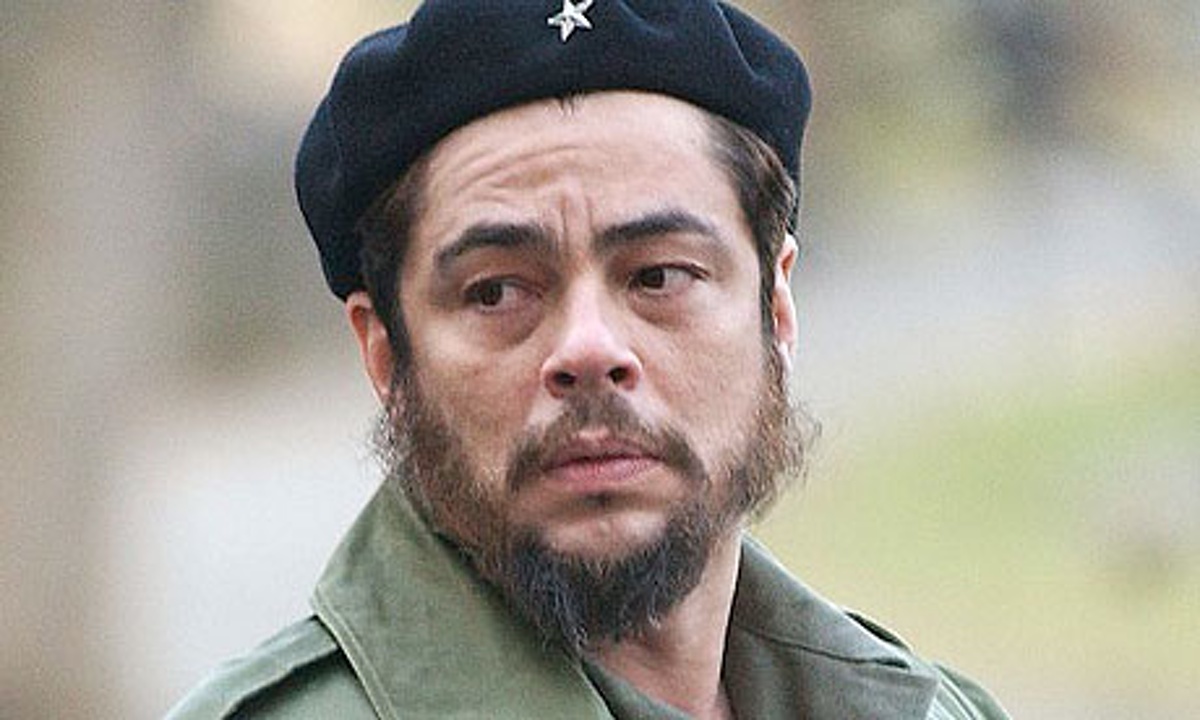
Marking the second partnering of director Steven Soderbergh and Del Toro, the actor undertook the titular role in a two part biopic drama, “Che,” following the life of Argentinian Marxist revolutionary, Ernesto ‘Che’ Guevara.
Using its generous running time over the two pieces to depict the impressive accomplishments of Che Guevara, Part One tells the tale of the Cuban Revolution, and the successful toppling of dictator Fulgencio Batista’s rein of power, whereas Part Two portrays the attempted Bolivian revolution, leading to the influential man’s untimely demise.
“Che” is seen as a tribute to the Marxist notion of advancement through the meeting of two conflicting ideas (known as dialectics), with the film separated into two halves, with two color schemes, and with two approaches to its narrative, cleverly showing two different revolutions, both essentially the same in theory but resulting in very different endings.
Utilising a nonlinear narrative, selecting interspersed segments of the leader’s life, “Che” nails the fundamental aspects of his rise and fall, full of weighty story telling, indicating just how critical the man became to the people of South America. The central performance, beautifully crafted by Del Toro, is phenomenal.
First shown as a double feature at Cannes Film Festival to mixed reviews, however, the majority see the innovative biopic as an inspirational work of art, bold in its story telling, at times harrowing, whilst at others, uplifting, flawlessly shot with its bleak and beautiful delivery. Spending a total of seven years researching the role, Del Toro is magnificent in honourably creating a truly brilliant depiction worthy of the fallen icon who achieved so much in South America.
Author Bio: Dan Carmody, born and raised in Doncaster, England, an area with very little in the way of film connections (The Full Monty was filmed down the road). When not working full time as a Civil Engineer, his one true passion is cinema, relating back to the early 1990’s when his mum showed him a lot of horror films way before he should have been allowed. An avid follower of all genres, both classical and modern. Also enthusiastic about video games, making lists and cheese.